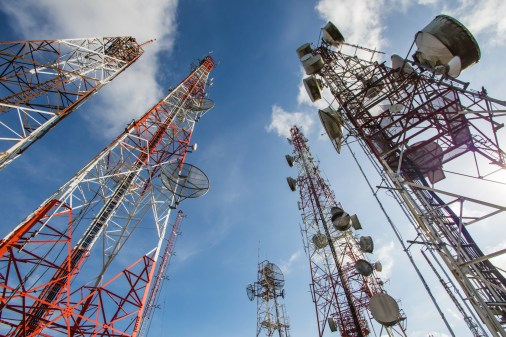Agencies’ EIS transitions modestly slowed by pandemic, so far

Only five agencies reported coronavirus-related difficulties moving to the government’s $50 billion telecommunications and network modernization contract since the pandemic started — but that number could rise as work gets underway.
As agencies award more Enterprise Infrastructure Solutions (EIS) task orders, contractors will need access to their sites — access that could be complicated by pandemic protocols, Allen Hill, acting deputy assistant commissioner for category management in the Office of Information Technology Category, told FedScoop.
Agencies need to factor contractor access into their EIS plans and coordinate closely with them if they’re to meet their next major deadline on March 31, 2021, when 50% of services must be transitioned.
“Agencies must award their EIS task orders and get replacement services installed,” Hill said. “The longer it takes to award task orders, the less time is available to execute complex and lengthy transition activities, increasing the risk of disruptions to agency operations and the delivery of critical services to the public.”
The General Services Administration included contact information for its Public Buildings Service among EIS transition resources to help facilitate contractor access to those it manages. And it’s making itself available to agencies in need of pandemic-related EIS assistance on a case-by-case basis, so long as they’ve awarded all their task orders.
Meanwhile, agencies whose EIS transitions were already underway proved better able to handle wide-scale telework than those reliant on older, legacy infrastructure, Hill said.
EIS is the primary contract for adopting Trusted Internet Connections 3.0 (TIC 3.0) and “as-a-service” cloud solutions addressing the new class of security vulnerabilities introduced by telework and an expanded network perimeter.
“As agencies continue to make progress toward transition some have identified gaps in their requirements, which they are now building into their solicitations,” Hill said.
Prior to Oct. 1, agencies could address COVID-19 IT requirements by modifying task orders on the contract EIS is replacing, Networx, which is due to expire on May 31, 2023. Such modifications are no longer permitted to encourage transitioning to EIS.
GSA hasn’t changed its EIS deadlines in response to the pandemic, the biggest of which is Sept. 30, 2022, when 100% of agencies’ telecom inventory must be off current contracts. That’s eight months before the Networx, Washington Interagency Telecommunications System (WITS) 3, and Local Service Agreement (LSA) contracts expire.
As of Sept. 30, five out of 17 large agencies and seven out of 23 medium agencies — 30% total — had awarded all of their planned EIS task orders. Among those agencies, 110 out of 142 EIS solicitations, 77.5%, had at least been issued to industry, according to the first progress tracking report.
Agencies’ EIS savings and cost avoidance have “greatly exceeded” expectations in 2020, Hill said. EIS prices generally average 28% to 32% lower than those paid by large commercial enterprises, and agencies that share their savings results are reporting an additional 10% than initially estimated.
Task order awards are including “significant investments” in modern IT infrastructure, Hill said.
“These solutions include Software-Defined Wide Area Network (SD-WAN), Voice over Internet Protocol and 5G, in addition to increased IT processing capacity,” he said. “As a result agencies are not having to make large capital investments, further increasing the savings.”
GSA released an EIS contract modification for SD-WAN in May, and more are expected for TIC 3.0 and broadband internet, Hill added.
Still, about 250,000 disconnects per month are needed to transition all services off expiring contracts by September 2022. That’s why GSA released guidance for agencies on March 23 on closing out the EIS transition, which includes a complete timeline of fiscal 2021 phases.
For the first time ever, transition to EIS was included as a measure on the Federal IT Acquisition Reform Act (FITARA) scorecard released in August.
“We have been collecting lessons learned and best practices from agencies’ solicitations. Our EIS industry partners recently provided some thought-provoking feedback as well,” Hill said. “We are analyzing these observations and expect to share additional guidance to agencies as they finish up their solicitations for transition and to improve the process for future EIS solicitations.”
This story is part of a FedScoop special report on the Network and Telecom Modernization. Read the rest of the report.

This story was featured in FedScoop Special Report: Network + Telecom Modernization - A FedScoop Special Report






